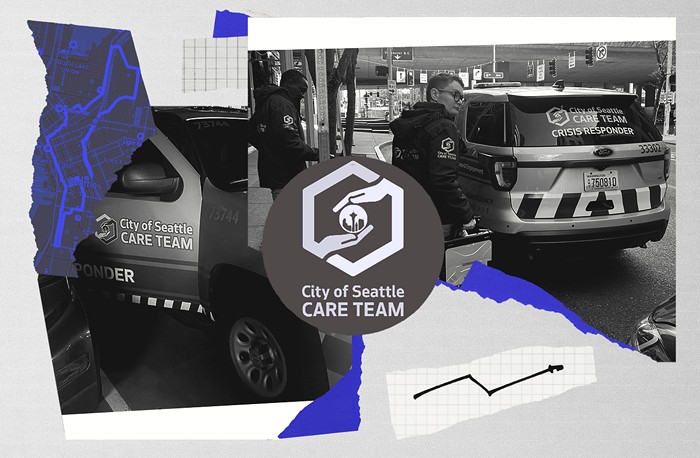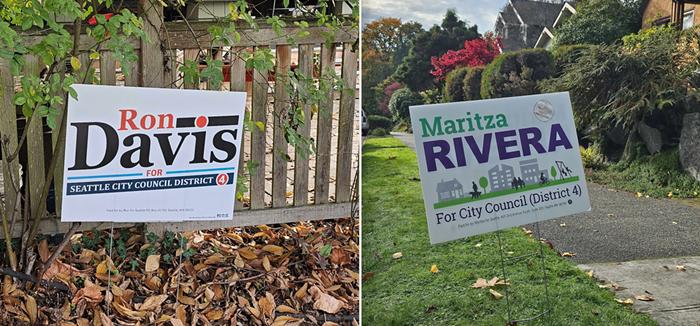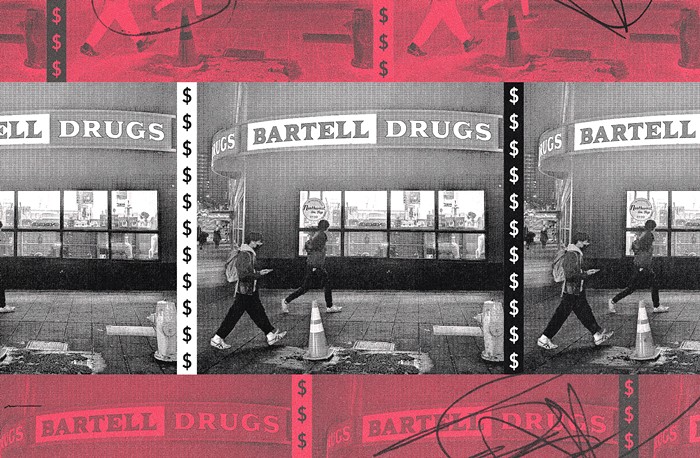What a difference a year makes. Last March, when the Seattle City Council first convened a special committee to study taxi regulations, the issues before it seemed intractable.
Taxi operators were demanding a crackdown on flat-rate/for-hire cars picking up hailing customers, among other issues, while struggling flat-rate/for-hire drivers were demanding the same rights as traditional taxis to pick up hailing customers. There seemed to be no way to make both sides happy.
"I'd love to be presented with that problem again," Committee on Taxi, For-Hire, and Limousine Regulations chair Sally Clark sighed wistfully about her original mission. A year later, the surging popularity of unregulated "rideshare" services like Lyft, Sidecar, and uberX (redubbed "Transportation Network Companies," or TNCs) has flipped the industry on its head, uniting taxi and flat-rate/for-hire operators against a common foe. At stake is the survival of the traditional taxi industry—and the interests of the consumers it exclusively serves—as well as that of its trendy new competitors promising better service at an unregulated price.
Those TNCs are popular, yes—just look at those pink mustaches everywhere—and they've hired themselves some high-priced lobbyists. But at a packed committee meeting on February 14, they faced organized opposition from the established taxi industry. So the council canceled a vote and postponed legislation for two weeks while they wrestle with the thorniest question: Should the city place a limit on the number of TNC drivers (which currently proliferate in numbers the companies won't disclose), and endure the backlash of customers who find them faster and more efficient than traditional taxis?
This is an extremely complicated industry composed of multiple service categories subject to overlapping regulations from various jurisdictions. There are no easy solutions.
Town cars and their drivers are licensed and regulated by the state, whereas taxis and flat-rate/for-hire vehicles are licensed and regulated by both the city and the county (some are licensed to pick up passengers in just the city, others in just the non-Seattle portions of King County, and yet others in both the city and the county). Town cars are driven by state-licensed "chauffeurs," whereas city- and county-licensed "for-hire" drivers may operate both taxis and flat-rate/for-hire vehicles.
This byzantine regulatory structure would seem ripe for reform, but there is little the city can do to simplify it without the cooperation of both the state and the county. Add to that the sudden flood of unregulated (i.e., illegal) TNC vehicles into the market, and the council's task only becomes more complicated.
So what will the council do?
One thing that is clear is that the civil war between taxis and flat-rate/for-hires is over. Faced with the need to present a common front against the growing threat of the TNCs, the taxi industry has dropped opposition to a proposal that would allow the 195 city-licensed flat-rate/for-hire vehicles to legally pick up street hails, while at least temporarily reserving taxi stands for traditional taxis only. The city would also issue 150 new taxi medallions over the next two years, raising the total number of city-licensed taxis to 838. Those two measures are almost certain to pass, and would alone represent a 50 percent increase in the number of vehicles legally available to pick up street hails.
As for how to regulate the TNCs, the council agrees on much of that, too. In recognition that the same safety and consumer protection concerns apply, TNC drivers will likely be required to obtain the same for-hire license required to drive a taxi or flat-rate/for-hire vehicle (an effort will be made to streamline the training from two days to one), while TNC vehicles will be required to pass an annual third-party inspection. TNCs will further be required to provide adequate insurance to drivers whenever they are logged into the system (not just when a passenger is in the car), and will likely be required to file their rates with the city.
The remaining controversy—and the one that could blow up the entire effort—is over whether to cap the number of licensed TNC drivers.
As part of a two-year pilot program under the proposed ordinance, licensed for-hire drivers would be permitted to drive their personal cars for TNCs, pending inspection. Council Member Mike O'Brien wants to cap the number of authorized TNC drivers at 300, in order to protect the livelihoods of current for-hire drivers as well as the interests of customers who rely on traditional taxis. Council Members Sally Bagshaw and Tim Burgess favor no cap. As usual, Clark is in the middle, proposing an initial cap of 600 TNC drivers, a compromise that will likely prevail.
But will the TNCs comply? Both Lyft and uberX have argued that any cap would be arbitrary and unworkable, yet have refused to provide the council with data to back up their position. "I don't know how we make it anything but arbitrary when there is a lack of information," complained O'Brien.
So if a cap is imposed, the TNCs have a choice. They can participate in the pilot program and subsequently provide the data necessary to make their case for lifting or removing the cap. They can pull out of the Seattle market entirely. Or they can continue to operate illegally, daring the city to take on the nearly impossible task of enforcing the regulations.
The council is now scheduled to vote on a revised ordinance on February 27. ![]()



















